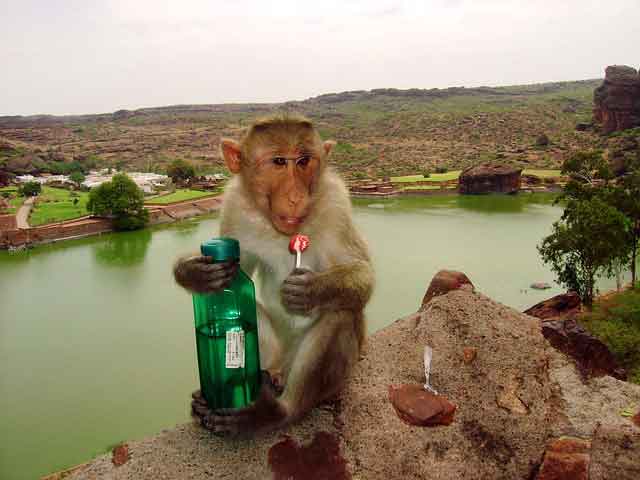
People are swallowing hundreds of thousands of microscopic pieces of plastic each time they drink a liter of bottled water, scientists have shown - a revelation that could have profound implications for human health.
A new paper released Monday in the Proceedings of the National Academy of Sciences found about 240,000 particles in the average liter of bottled water, most of which were "nanoplastics" - particles measuring less than one micrometer (less than one-seventieth the width of a human hair).
For the past several years, scientists have been looking for "microplastics," or pieces of plastic that range from one micrometer to half a centimeter in length, and found them almost everywhere. The tiny shards of plastic have been uncovered in the deepest depths of the ocean, in the frigid recesses of Antarctic sea ice and in the human placenta. They spill out of laundry machines and hide in soils and wildlife. Microplastics are also in the food we eat and the water we drink: In 2018, scientists discovered that a single bottle of water contained, on average, 325 pieces of microplastics.
But researchers at Columbia University have now identified the extent to which nanoplastics also pose a threat.
"Whatever microplastic is doing to human health, I will say nanoplastics are going to be more dangerous," said Wei Min, a chemistry professor at Columbia and one of the authors of the new paper.
Scientists have also found microplastics in tap water, but in smaller amounts.
Sherri Mason, a professor and director of sustainability at Penn State Behrend in Erie, Pa., says plastic materials are a bit like skin - they slough off pieces into water or food or whatever substance they are touching.
"We know at this point that our skin is constantly shedding," she said. "And this is what these plastic items are doing - they're just constantly shedding."
The typical methods for finding microplastics can't be easily applied to finding even smaller particles, but Min co-invented a method that involves aiming two lasers at a sample and observing the resonance of different molecules. Using machine learning, the group was able to identify seven types of plastic molecules in a sample of three types of bottled water.
"There are some other techniques that have identified nanoplastics before," said Naixin Qian, a PhD student in chemistry at Columbia and the first author of the new paper. "But before our study, people didn't have a precise number of how many."
"It's really groundbreaking," said Mason, who was not involved in the research but was one of the first researchers to identify plastics in bottled water. The new study, she says, shows how extensive nanoplastics are and provides a starting point to assess their health effects.
"Normal humans looking at a sample of water - if there's visible plastic in it, they'll be turned off," she said. "But they don't realize that it's actually the invisible plastics present that are the biggest concern."
The new study found pieces of PET (polyethylene terephthalate), which is what most plastic water bottles are made of, and polyamide, a type of plastic that is present in water filters. The researchers hypothesized that this means plastic is getting into the water both from the bottle and from the filtration process.
Researchers don't yet know how dangerous tiny plastics are for human health. In a large review published in 2019, the World Health Organization said there wasn't enough firm evidence linking microplastics in water to human health, but described an urgent need for further research.
In theory, nanoplastics are small enough to make it into a person's blood, liver and brain. And nanoplastics are likely to appear in much larger quantities than microplastics - in the new research, 90 percent of the plastic particles found in the sample were nanoplastics, and only 10 percent were larger microplastics.
Finding a connection between microplastics and health problems in humans is complicated - there are thousands of types of plastics, and over 10,000 chemicals used to manufacture them. But at a certain point, Mason said, policymakers and the public need to prepare for the possibility that the tiny plastics in the air we breathe, the water we drink and the clothes we wear have serious and dangerous effects.
"You still have a lot of people that, because of marketing, are convinced that bottled water is better," Mason said. "But this is what you're drinking in addition to that H2O."
(COMMENT, BELOW)


 Contact The Editor
Contact The Editor
 Articles By This Author
Articles By This Author